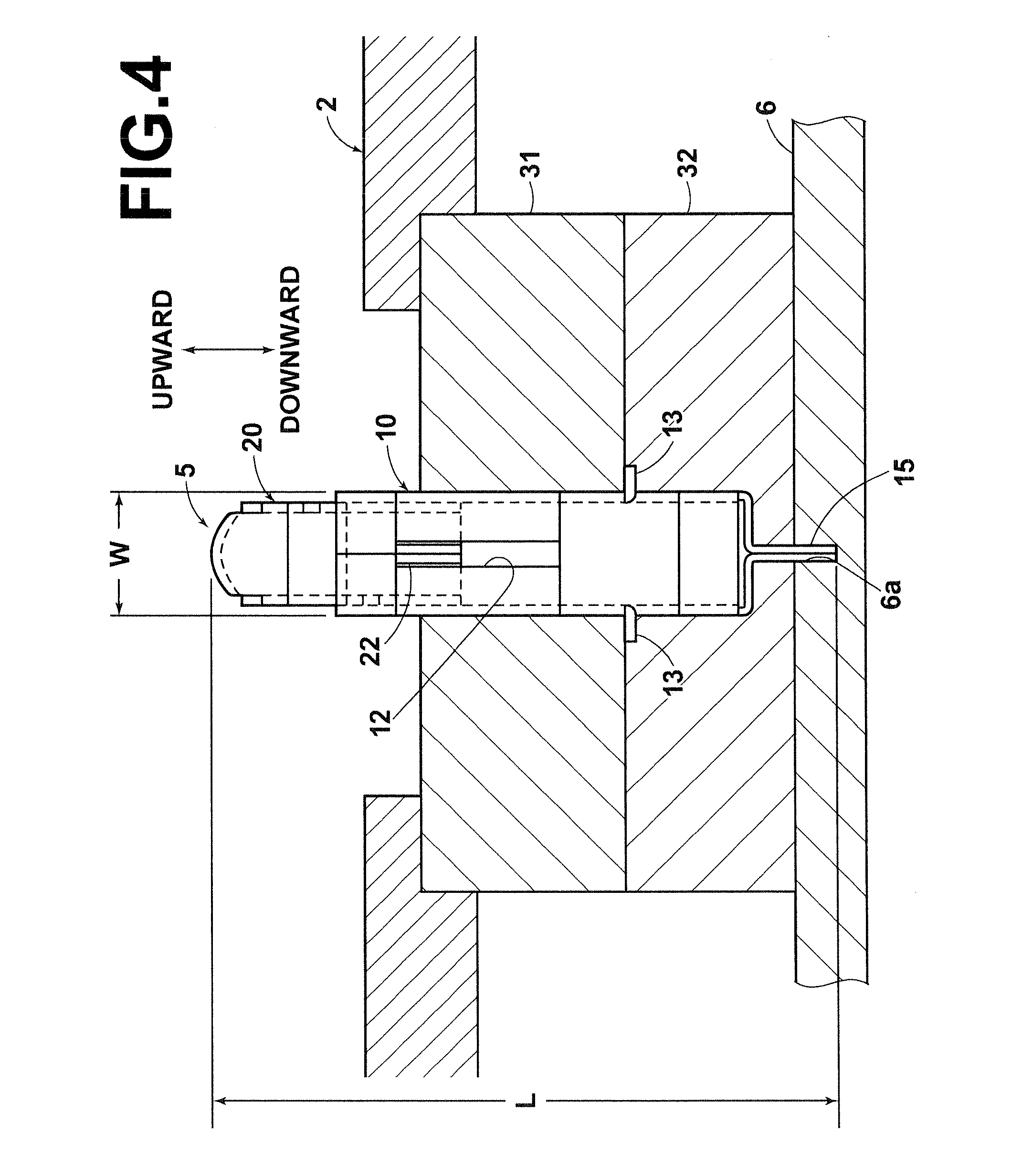Conductor Pin
a technology of conductor pins and pins, which is applied in the field of conductor pins, can solve the problems of difficult to provide dimensional accuracy to the hollow member with the top panel, the difficulty of producing small hollow members with a top panel, and the difficulty of conventional conductor pins such as described above in further size reduction, etc., and achieves the effect of reducing the electric resistance between the outer and inner pin portions, easy production and easy production
- Summary
- Abstract
- Description
- Claims
- Application Information
AI Technical Summary
Benefits of technology
Problems solved by technology
Method used
Image
Examples
first embodiment
[0056]FIG. 1 is a side view illustrating a cellular phone employing a conductor pin according to the present invention, FIG. 2 is a perspective view illustrating a battery pack housing recess in the telephone body of the cellular phone from which the battery pack has been removed, and FIG. 3 is a perspective view illustrating the battery pack.
[0057] A cellular phone 1 shown in the drawing includes a telephone body 2 and a battery pack 3 removably mounted in the telephone body 2. A battery pack housing recess 4 in the telephone body 2 has five conductor pins 5 projecting therefrom. The telephone body 2 contains a print circuit board 6 (see FIG. 4 explained later) on which various electronic parts are mounted. The conductor pins 5 are fixed to the circuit board 6 and are electrically connected to the circuit board 6, i.e., conductive terminal areas of a circuit pattern on the circuit board 6. The battery pack 3 is mounted in the battery pack housing recess 4 in the telephone body 2 sh...
second embodiment
[0080] Next, a conductor pin according to the present invention will be described.
[0081]FIGS. 11A and 11B illustrate the conductor pin according to the second embodiment the present invention. FIG. 11A illustrates the uncompressed state thereof and FIG. 11B illustrates the compressed state thereof. Further, FIGS. 12A and 12B illustrate sectional views taken along line XIIA-XIIA in FIG. 11A and line XIIB-XIIB in FIG. 11B, respectively.
[0082] Similarly to the conductor pin 5 of the first embodiment, a conductor pin 7 of the present embodiment is used for allowing conduction between the battery pack 3 and the print circuit board 6 of a cellular phone. The bottom side of the conductor pin 7 is fixed to the print circuit board 6 to be electrically connected to the circuit board 6, i.e., to the conductive terminal areas of the circuit pattern on the circuit board 6, and the upper side of the conductor pin 7 contacts the conductive terminal areas of the battery pack 3 of the cellular phon...
PUM
| Property | Measurement | Unit |
|---|---|---|
| width | aaaaa | aaaaa |
| length | aaaaa | aaaaa |
| thickness | aaaaa | aaaaa |
Abstract
Description
Claims
Application Information
 Login to View More
Login to View More - R&D
- Intellectual Property
- Life Sciences
- Materials
- Tech Scout
- Unparalleled Data Quality
- Higher Quality Content
- 60% Fewer Hallucinations
Browse by: Latest US Patents, China's latest patents, Technical Efficacy Thesaurus, Application Domain, Technology Topic, Popular Technical Reports.
© 2025 PatSnap. All rights reserved.Legal|Privacy policy|Modern Slavery Act Transparency Statement|Sitemap|About US| Contact US: help@patsnap.com



